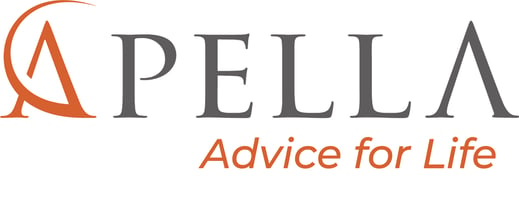Apella Wealth Blog

The Exceptional American Economy
Remember the good old days when the U.S. economy was growing at a 2.5% clip and when it accounted for 80% of the global economy’s growth? When jobs were plentiful because the unemployment rate was below 5% and prices were relatively stable because the inflation rate was down below 3% a year? When manufacturing output in America was routinely experiencing 1% - 3% growth and the average manufacturing worker was living comfortably on the equivalent (in today’s dollars) of $98,846, including pay and benefits.
Remember when the United States was routinely posting the greatest economic growth rate in the world—by a wide margin? Remember when American stock market performance was outpacing all other markets—by a wide margin—and the dollar was strong against all other currencies?
You don’t have to have a long memory to recall this golden age of American prosperity, because those statistics are all from today, right now, the world you are living in. Doubtful, you say? U.S. economic growth (as measured by the Gross Domestic Product or GDP) is running at 2.5%, well ahead of the Japanese, Canadian, French, Italian, English and German growth rates (see chart below).

Meanwhile, since 2019, the S&P 500 index of the largest American companies has delivered 48% market gains, compared to just 10% for developed markets outside the U.S. (represented by the MSCI EAFE index), as shown below.

The International Monetary Fund’s latest report notes that all countries have been dealing with the same challenges of post-pandemic inflation, but a combination of strong growth in the U.S. labor force and strong productivity growth fueled by an innovative corporate sector has once again driven America to the head of the economic pack. The Peterson Foundation economists actually found that, jujitsu-like, the American economy was able to turn the pandemic to its advantage, moving millions of lower-income workers to better jobs providing more income security.
To be clear, not every American may be experiencing the benefits of our current economic environment and the increase in costs from high inflation in 2022 and 2023 are still painful. But it’s a curious fact about human nature that we can’t see the good times in real time, at the moment.
We only recognize and appreciate them (and wish they were back) when we’re looking in the rear-view mirror after the passing of a decade or more. That means that sometime in the late 2030s, people will look back at today’s American economy and marvel at how good we had it—without knowing that most of us never realized this at the time.
How does the current economic environment impact you and achieving your goals? So glad you asked! Your financial planner at Apella Wealth would be happy to chat with you about this. Call anytime!
Sources:
https://tradingeconomics.com/united-states/unemployment-rate#
https://nam.org/manufacturing-in-the-united-states/facts-about-manufacturing-expanded/#
https://www.axios.com/2024/01/31/us-economy-2024-gdp-g7-nations
https://apnews.com/article/off-charts-global-markets-89ac7ec845b64e2e4cd41d6fb57f33d4
Disclosures:
Apella Capital, LLC, DBA Apella Wealth is an investment advisory firm registered with the Securities and Exchange Commission. The firm only transacts business in states where it is properly registered or excluded or exempt from registration requirements. Registration with the SEC or any state securities authority does not imply a certain level of skill or training. Past performance does not guarantee future results. As with any investment strategy, there is the possibility of profitability as well as loss. Neither Symmetry nor its affiliates provide tax advice and nothing either stated or implied here should be inferred as providing such advice. Any chart that is presented in this brochure is for informational purposes only and should not be considered an all-inclusive formula for security selection.
The firm only transacts business in states where it is properly registered or excluded or exempt from registration requirements. Registration with the SEC or any state securities authority does not imply a certain level of skill or training. Different types of investments involve varying degrees of risk, and there can be no assurance that the future performance of any specific investment, investment strategy, product or any non- investment related content made reference to directly or indirectly in this commentary will be profitable, equal any corresponding indicated historical performance level(s), be suitable for your portfolio or individual situation, or prove successful. Due to various factors, including changing market conditions and/or applicable laws, the content may not be reflective of current opinions or positions. Please note the material is provided for educational and background use only. Moreover, you should not assume that any discussion or information contained in this material serves as the receipt of, or as a substitute for, personalized investment advice. Diversification seeks to improve performance by spreading your investment dollars into various asset classes to add balance to your portfolio. Using this methodology, however, does not guarantee a profit or protection from loss in a declining market. Past performance does not guarantee future results.
Index Disclosure and Definitions All indexes have certain limitations. Investors cannot invest directly in an index. Indexes have no fees. Historical performance results for investment indexes generally do not reflect the deduction of transaction and/or custodial charges or the deduction of an investment management fee, the incurrence of which would have the effect of decreasing historical performance. Actual performance for client accounts may differ materially from the index portfolios.
S&P 500 Index represents the 500 leading U.S. companies, approximately 80% of the total U.S. market capitalization.
MSCI EAFE Index measures the large- and mid-cap equity market performance of 21 developed markets outside of the U.S. and Canada covering approximated 85% of the market capitalization in each country.
Related Articles
Income Tax Planning for Life Transitions: One Size Does Not Fit All
Although he is not credited with originating the phrase, Benjamin Franklin included the famous...
